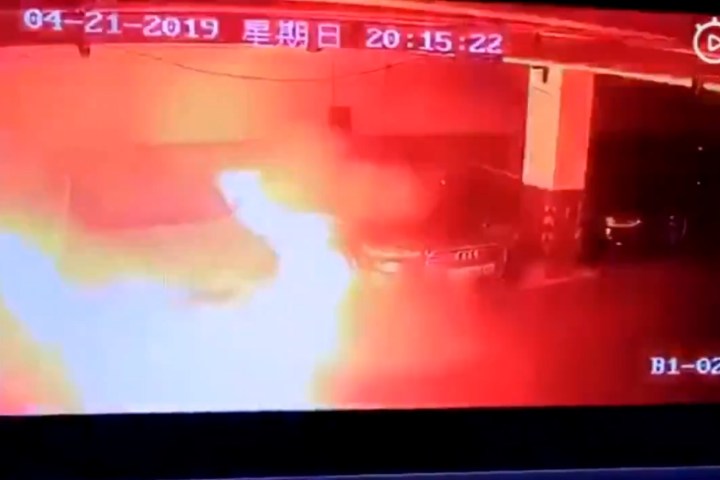
Tesla has fixed a potentially fiery issue it discovered in China by sending out an over-the-air software update that modifies the battery pack’s charge and thermal management settings. The California company sent a team of investigators to Shanghai to look into the issue after a Tesla Model S exploded in a parking garage in April 2019.
In-house investigators at Tesla blamed the fire on a single defective battery module, a term that refers to a batch of cells grouped together. The battery pack in a Model S — and in almost every electric car on the market, regardless of manufacturer — is made up of several modules. The company hasn’t revealed why the module caught fire, but it explained that the over-the-air update it sent out will prevent additional fires, and help increase the battery’s life.
The investigation began after a Model S exploded in a parking garage. The incident happened on the evening of April 21, and a video of the electric sedan going up in flames was widely shared on Chinese social media network Weibo before spreading to Twitter and Facebook. The company stressed that no one was hurt during the incident.
Footage from what appears to be a security camera shows an early, pre-face-lift Model S backed into a parking spot. Smoke slowly begins to emit from the bottom of the car, where its lithium-ion battery pack is located. The Model S explodes several seconds later, and it quickly goes up in flames. The fire destroyed at least three other cars that were parked around it.
We’ve seen Teslas go up in flames before, but it has almost always been after a high-speed accident. It’s a risk every car regardless of powertrain type faces; the fire usually starts when a flammable component, like a battery pack or a fuel tank, gets punctured. The scenario captured on film in Shanghai was highly unusual because the Model S wasn’t moving, and it wasn’t hit by another object.
An electric ES8 crossover made by Nio, one of Tesla’s rivals, also caught fire in China in April 2019. The incident happened in the city of Xi’an while the car was being worked on. Nio looked into the blaze, blamed faulty battery modules, and issued a recall covering more than 4,000 cars. The two fiery incidents are similar, and they happened just days apart in the same country, but they’re completely unrelated.
Updated July 1, 2019: Added information about over-the-air update.



